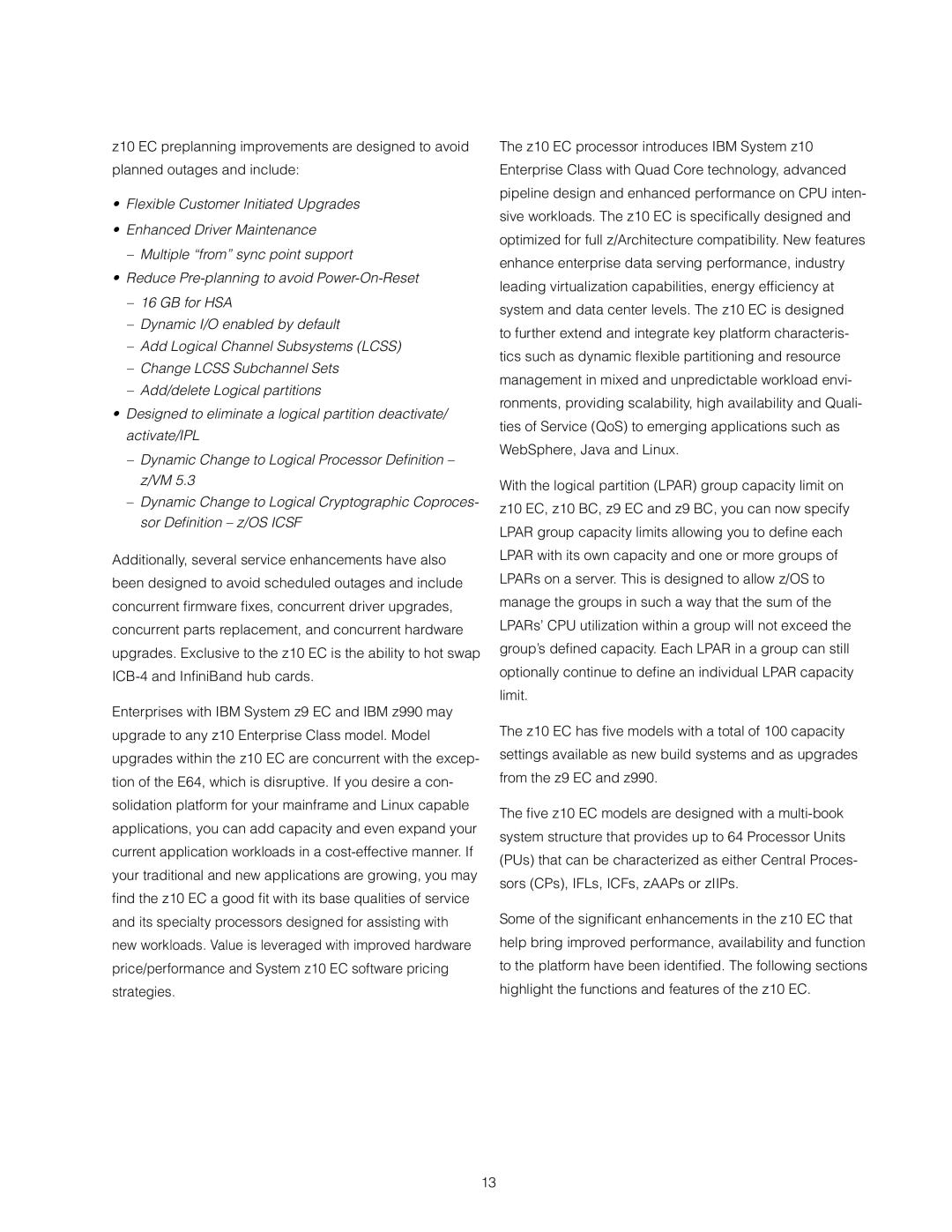z10 EC preplanning improvements are designed to avoid planned outages and include:
•Flexible Customer Initiated Upgrades
•Enhanced Driver Maintenance
–Multiple “from” sync point support
•Reduce
–16 GB for HSA
–Dynamic I/O enabled by default
–Add Logical Channel Subsystems (LCSS)
–Change LCSS Subchannel Sets
–Add/delete Logical partitions
•Designed to eliminate a logical partition deactivate/ activate/IPL
–Dynamic Change to Logical Processor Defi nition – z/VM 5.3
–Dynamic Change to Logical Cryptographic Coproces- sor Defi nition – z/OS ICSF
Additionally, several service enhancements have also been designed to avoid scheduled outages and include concurrent fi rmware fi xes, concurrent driver upgrades, concurrent parts replacement, and concurrent hardware upgrades. Exclusive to the z10 EC is the ability to hot swap
Enterprises with IBM System z9 EC and IBM z990 may upgrade to any z10 Enterprise Class model. Model upgrades within the z10 EC are concurrent with the excep- tion of the E64, which is disruptive. If you desire a con- solidation platform for your mainframe and Linux capable applications, you can add capacity and even expand your current application workloads in a
find the z10 EC a good fi t with its base qualities of service and its specialty processors designed for assisting with new workloads. Value is leveraged with improved hardware price/performance and System z10 EC software pricing strategies.
The z10 EC processor introduces IBM System z10 Enterprise Class with Quad Core technology, advanced pipeline design and enhanced performance on CPU inten- sive workloads. The z10 EC is specifi cally designed and optimized for full z/Architecture compatibility. New features enhance enterprise data serving performance, industry leading virtualization capabilities, energy effi ciency at system and data center levels. The z10 EC is designed to further extend and integrate key platform characteris- tics such as dynamic fl exible partitioning and resource management in mixed and unpredictable workload envi- ronments, providing scalability, high availability and Quali- ties of Service (QoS) to emerging applications such as WebSphere, Java and Linux.
With the logical partition (LPAR) group capacity limit on z10 EC, z10 BC, z9 EC and z9 BC, you can now specify LPAR group capacity limits allowing you to defi ne each LPAR with its own capacity and one or more groups of LPARs on a server. This is designed to allow z/OS to manage the groups in such a way that the sum of the LPARs’ CPU utilization within a group will not exceed the group’s defi ned capacity. Each LPAR in a group can still optionally continue to defi ne an individual LPAR capacity limit.
The z10 EC has fi ve models with a total of 100 capacity settings available as new build systems and as upgrades from the z9 EC and z990.
The fi ve z10 EC models are designed with a
Some of the signifi cant enhancements in the z10 EC that help bring improved performance, availability and function to the platform have been identifi ed. The following sections highlight the functions and features of the z10 EC.
13
